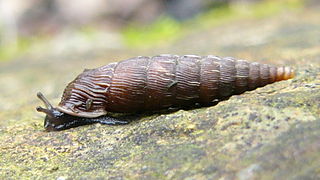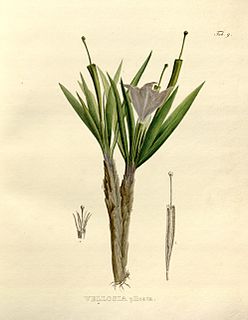Related Research Articles

Thuja is a genus of coniferous trees in the Cupressaceae. There are five species in the genus, two native to North America and three native to eastern Asia. The genus is monophyletic and sister to Thujopsis. Members are commonly known as arborvitaes, thujas or cedars.

Thuja plicata, commonly called western red cedar or Pacific red cedar, giant arborvitae or western arborvitae, or just cedar, giant cedar, or shinglewood, is a species of Thuja, an evergreen coniferous tree in the cypress family Cupressaceae, native to western North America. It is not a true cedar of the genus Cedrus.

Purshia is a small genus of 5-8 species of flowering plants in the family Rosaceae, native to western North America, where they grow in dry climates from southeast British Columbia in Canada south throughout the western United States to northern Mexico. The classification of Purshia within the Rosaceae has been unclear. The genus was originally placed in the subfamily Rosoideae, but is now placed in subfamily Dryadoideae.

The gray sac-winged bat is a species in the family Emballonuridae which comprises the 51 species of sac-winged bats. It is found in Mexico from Baja California Sur and Sonora to Guatemala, El Salvador, Honduras, Nicaragua, Costa Rica and northern Colombia, at elevations up to 1,500 metres (4,900 ft).

Tiquilia plicata, the fanleaf crinklemat or fan-leaved tiquilia, is a perennial, subshrub-like plant of lower elevation deserts in the family Boraginaceae, the borages and forget-me-nots. It is found in the southwestern United States and northwestern Mexico, in the states of California, Nevada, Arizona, Sonora, and Baja California. It is a short, low-growing plant, seldom over 12 in tall.

Laciniaria plicata is a species of small air-breathing land snail, a terrestrial pulmonate gastropod mollusk in the family Clausiliidae, the door snails.

Nerita plicata is a species of tropical sea snail, a marine gastropod mollusk in the family Neritidae, the nerites. This species is found throughout the Indo-West Pacific.

Spathoglottis plicata, commonly known as the Philippine ground orchid, or large purple orchid is an evergreen, terrestrial plant with crowded pseudobulbs, three or four large, pleated leaves and up to forty resupinate, pink to purple flowers. It is found from tropical and subtropical Asia to Australia and the western Pacific including Tonga and Samoa.

Amentoflavone is a biflavonoid constituent of a number of plants including Ginkgo biloba, Chamaecyparis obtusa (hinoki), Hypericum perforatum and Xerophyta plicata.
Eupleura is a genus of sea snails, marine gastropod mollusks in the family Muricidae, the murex snails or rock snails.
The pars plicata is the folded and most anterior portion of the ciliary body of an eye. The ciliary body is a part of the uvea, one of the three layers that comprise the eye. The pars plicata is located anterior to the pars plana portion of the ciliary body, and posterior to the iris. The lens zonules that are used to control accommodation are attached to the pars plana.

Plicatin B is a hydroxycinnamic acid found in Psoralea plicata.

Plicatin A is a hydroxycinnamic acid found in Psoralea plicata.
Plicata, plicate, plicated, pleated or folded in Latin, may refer to:
Eois plicata is a moth in the family Geometridae. It is found in India.

Nanuza plicata is a plant species in the family Velloziaceae, endemic to Brazil.

Pterolophia is a genus of longhorn beetles of the subfamily Lamiinae, containing the following species:

Elaeocyma plicata is an extinct species of sea snail, a marine gastropod mollusk in the family Drilliidae.
Pterolophia guineensis is a species of beetle in the family Cerambycidae. It was described by James Thomson in 1864, originally under the genus Alyattes.
References
- ↑ BioLib.cz - Pterolophia plicata. Retrieved on 8 September 2014.